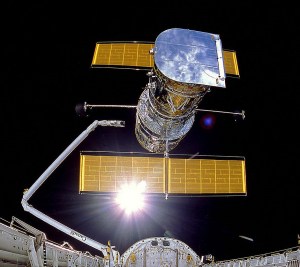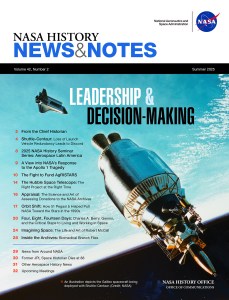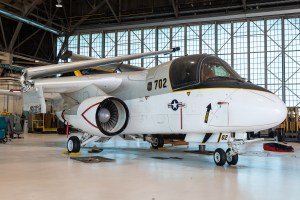On Oct. 1, 1958, the National Aeronautics and Space Administration (NASA) officially began operations. President Dwight D. Eisenhower signed into law the National Aeronautics and Space Act the previous July, creating NASA to lead America’s civilian space program in response to Soviet advances in space exploration. T. Keith Glennan and Hugh L. Dryden were sworn in as NASA’s first administrator and deputy administrator, respectively. As its core, the new agency incorporated the National Advisory Committee for Aeronautics (NACA), founded in 1915 to advance aeronautics research in the United States. The NACA elements included three large research laboratories and two small test facilities. Projects and facilities transferred from other agencies to augment NASA’s capabilities. Within days of opening, NASA began work on America’s first human spaceflight program.
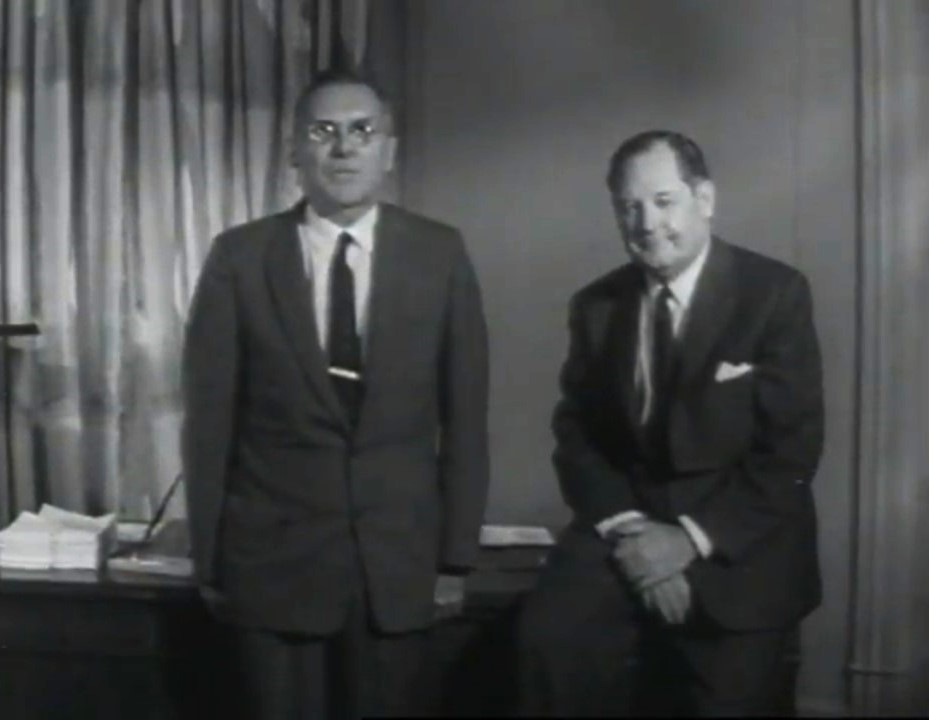
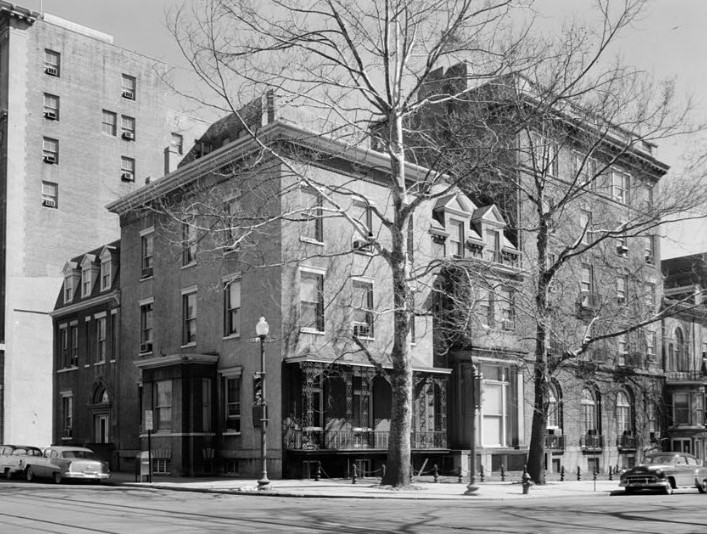
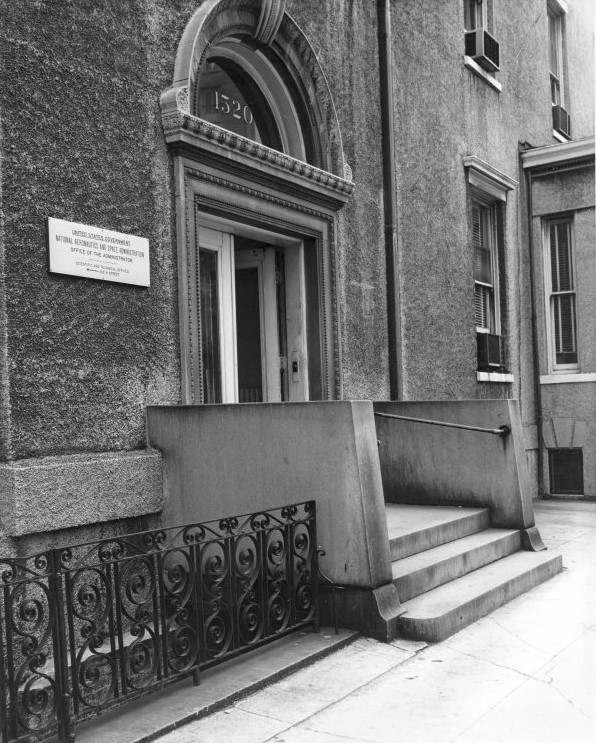
Left: NASA Deputy Administrator Hugh L. Dryden, left, introduces NASA Administrator T. Keith Glennan as he prepares to deliver a filmed address to NACA employees about the impending transition to NASA. Middle: The Dolley Madison House on LaFayette Square in Washington, D.C., NASA’s first headquarters building. Right: The main entrance to the Dolley Madison House.
In a filmed address delivered to all NACA employees shortly before the transition, Glennan explained that the change to the new organization should not affect their daily lives, even though the new agency would over time take on more responsibilities. Indeed, the transition for the existing 8,000 NACA employees proved rather seamless. They went home on Sept. 30 as NACA employees and reported for work on Oct. 1 as NASA employees, without change to their daily routines. On Oct. 1, Glennan addressed the 170-member headquarters staff in the courtyard of the Dolley Madison House on Lafayette Square in Washington, D.C., that served as NASA’s first headquarters.
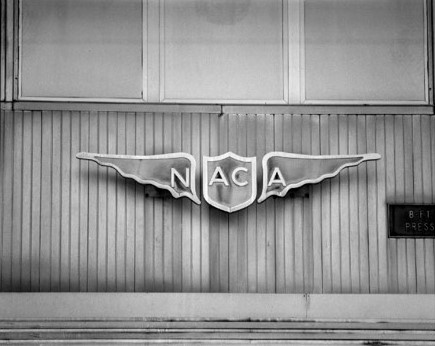
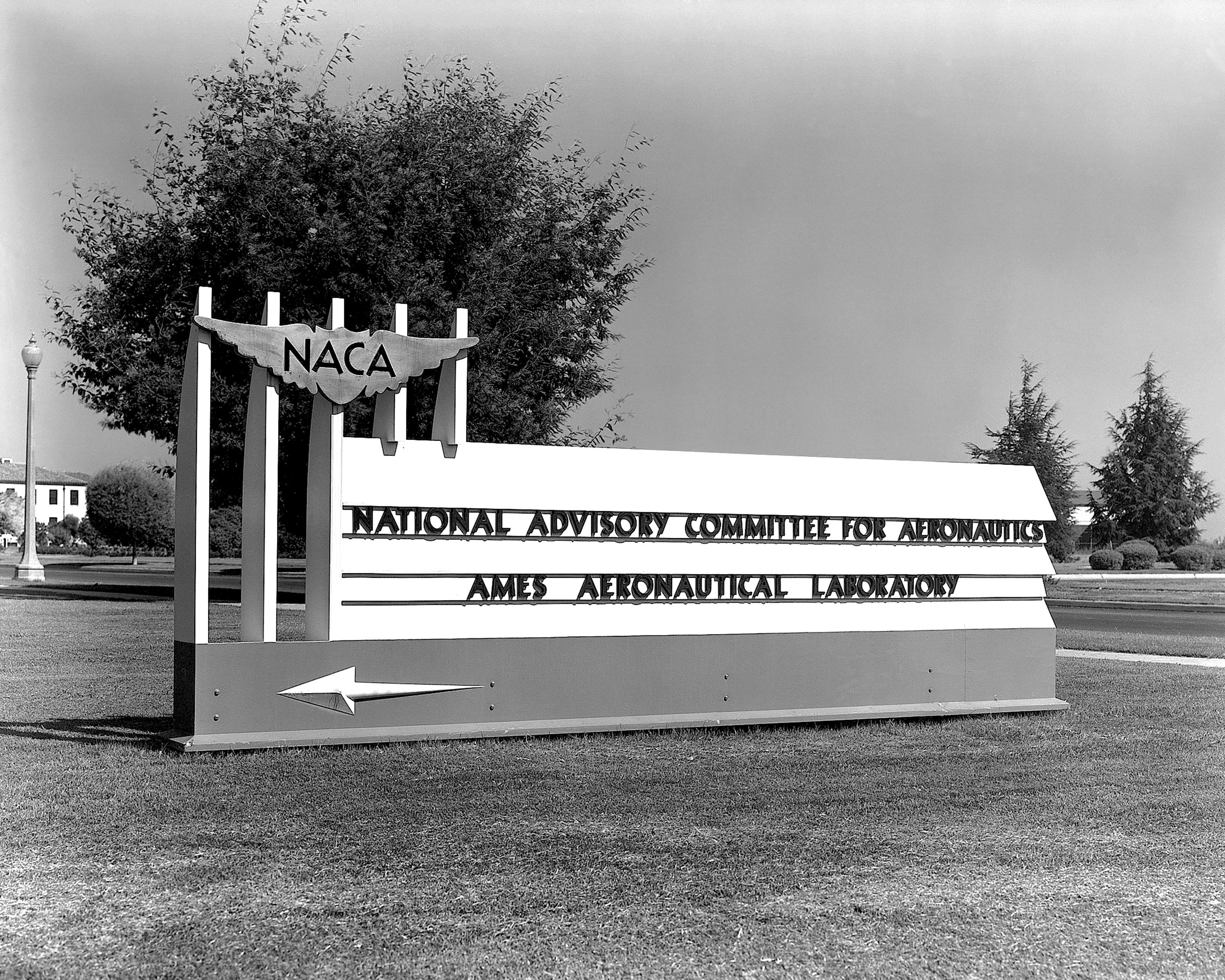
Left: The logo for the National Advisory Committee for Aeronautics (NACA) on the wall of the 8-foot transonic pressure wind tunnel at the Langley Aeronautical Laboratory, now NASA’s Langley Research Center in Hampton, Virginia. Right: The entrance sign to the NACA Ames Aeronautical Laboratory, now NASA’s Ames Research Center in California’s Silicon Valley.
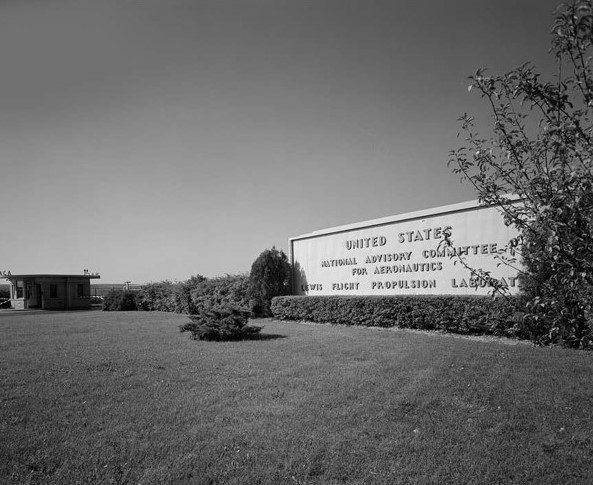
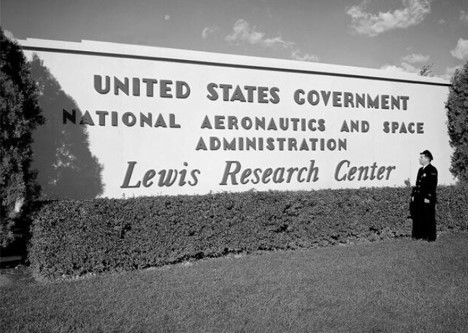
Left: The entrance sign to NACA’s Lewis Flight Propulsion Laboratory. Right: The entrance sign to the renamed NASA Lewis Research Center, now NASA’s Glenn Research Center in Cleveland.
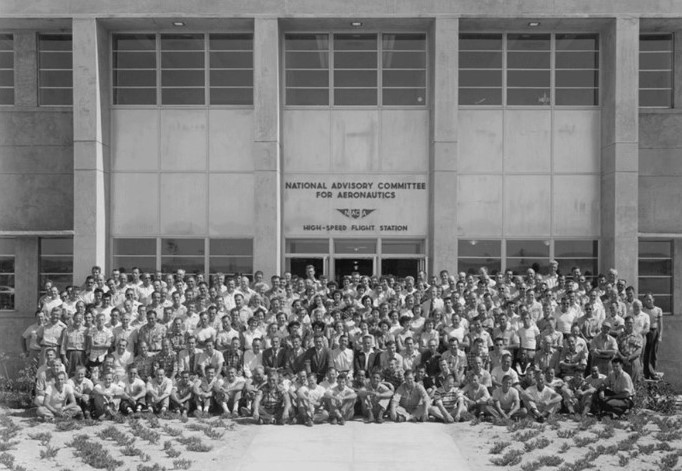
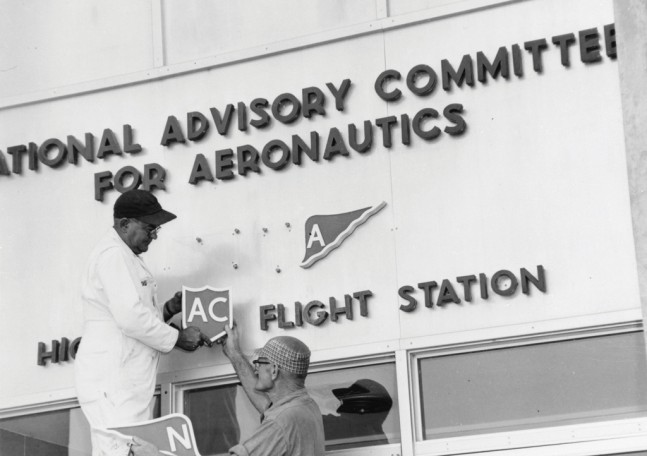
Left: The NACA High Speed Flight Station, now NASA’s Armstrong Flight Research Center, at Edwards Air Force Base in California. Right: Workers removing the NACA logo at the High Speed Flight Station.
Three NACA research laboratories – Langley Aeronautical Laboratory in Hampton, Virginia; Ames Aeronautical Laboratory in Mountain View, California; and Lewis Flight Propulsion Laboratory in Cleveland, Ohio – and two small test facilities – the Muroc Dry Lake in California’s high desert for high-speed flight research, and one for sounding rockets at Wallops Island in Virginia – transferred to NASA on Oct. 1, with a total of 8,000 employees and an annual budget of $100 million. By Dec. 31, 1958, NASA had absorbed elements of the Army Ballistic Missile Agency in Huntsville, Alabama, the Naval Research Laboratory in Washington, D.C., including its Project Vanguard, and the Jet Propulsion Laboratory in Pasadena, California, a contractor facility operated by the California Institute of Technology. These added 420 employees and 2,300 contractors to the workforce and brought the agency’s appropriations to more than $330 million. It also acquired a high-priority rocket engine development project from the U.S. Air Force. Over time, the Agency established or incorporated additional centers and facilities to meet the growing needs of the nation’s space program. Today, 10 field centers across the nation work together to accomplish NASA’s varied missions.
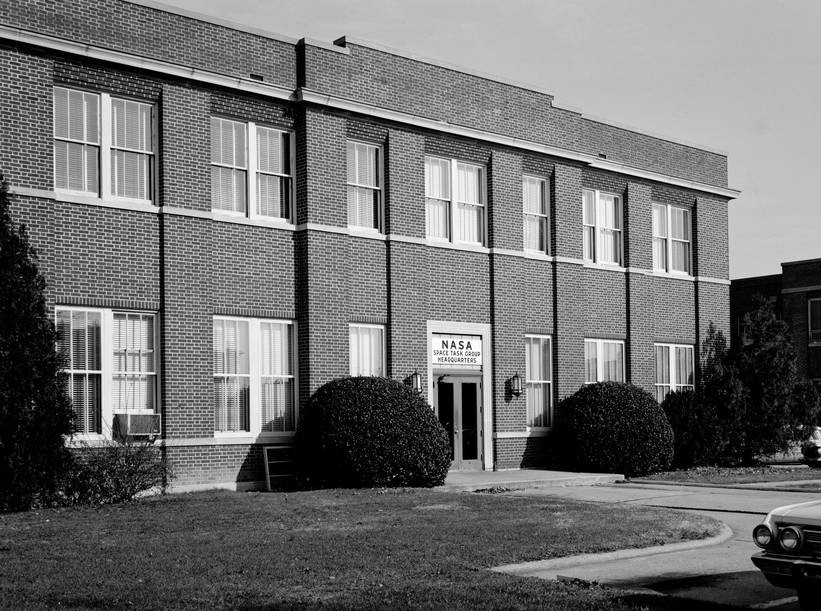
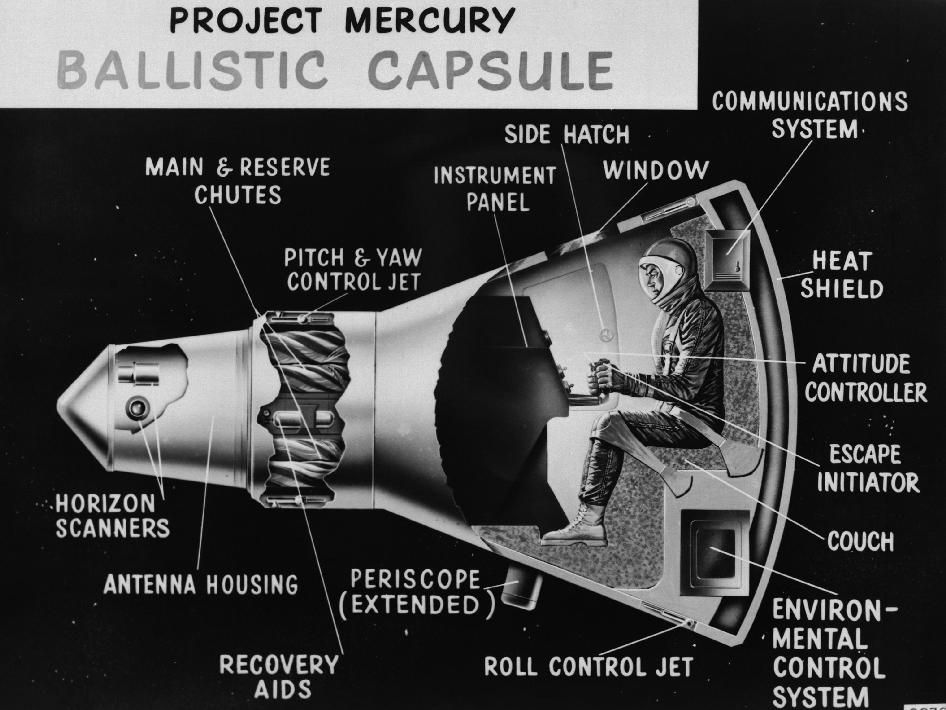
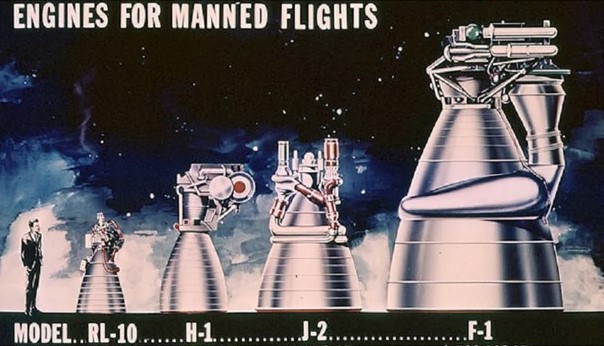
Left: The headquarters building for the Space Task Group at NASA’s Langley Research Center in Hampton, Virginia. Middle: An early cutaway representation of a Mercury capsule. Right: An early representation of rocket engines for human spaceflight, including the F-1 at right.
President Eisenhower gave NASA overall responsibility for developing America’s human spaceflight program. The new agency inherited two large top priority projects in this arena. The first involved developing a spacecraft capable of carrying a single human into space and returning him safely to Earth. Engineers at Langley had conducted studies in this area since 1952, and on Oct. 8, 1958, Glennan gave the formal approval for the formation of a team at Langley to develop this capability. On Nov. 5, the Space Task Group (STG) formally came into existence, with Robert R. Gilruth named as project manager and Charles J. Donlan as his assistant. Thanks to their previous work, the STG released the specifications for the crewed capsule on Nov. 14, mailing them three days later to 20 prospective companies that had expressed an interest in bidding on the project that NASA formally named Project Mercury on Nov. 26. On Jan. 9, 1959, NASA selected the McDonnell Aircraft Corporation of St. Louis to develop the spacecraft. The second major high-priority project involved the development of a 1.5-million-pound thrust rocket engine to power a future large space booster. The new agency inherited studies conducted by the U.S. Air Force, and by mid-December, NASA selected the Rocketdyne Division of North American Aviation to develop the F-1 engine that later powered the Saturn V moon rocket.
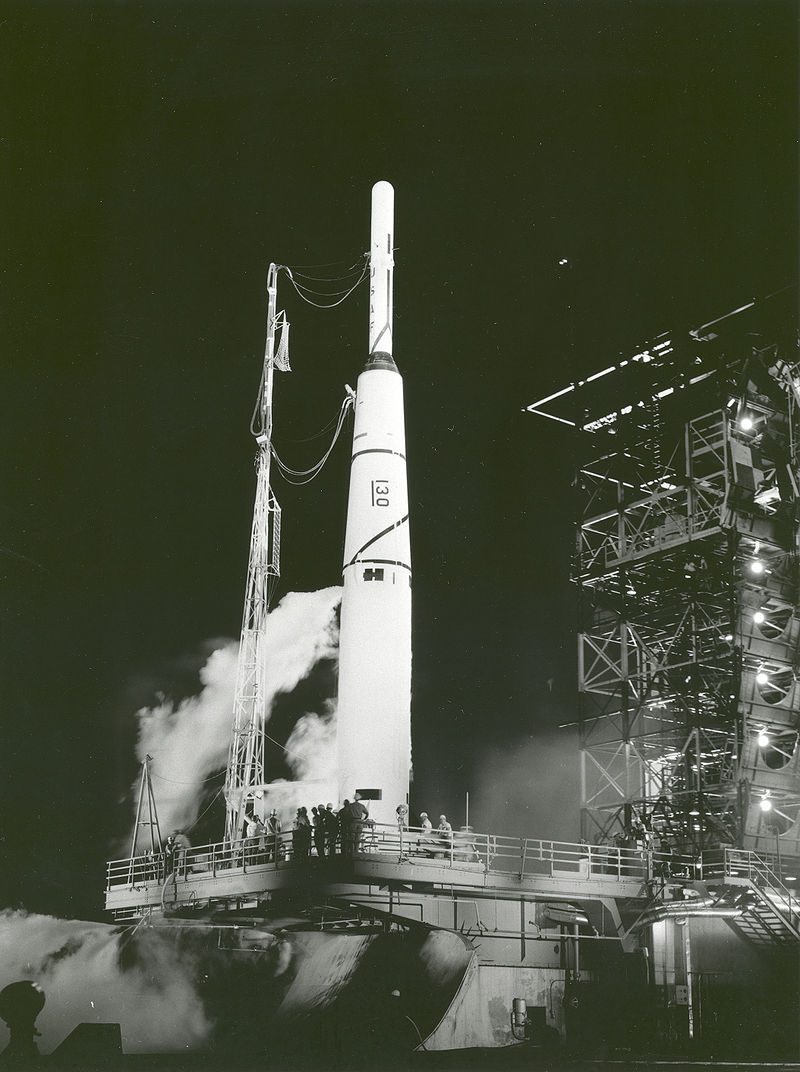
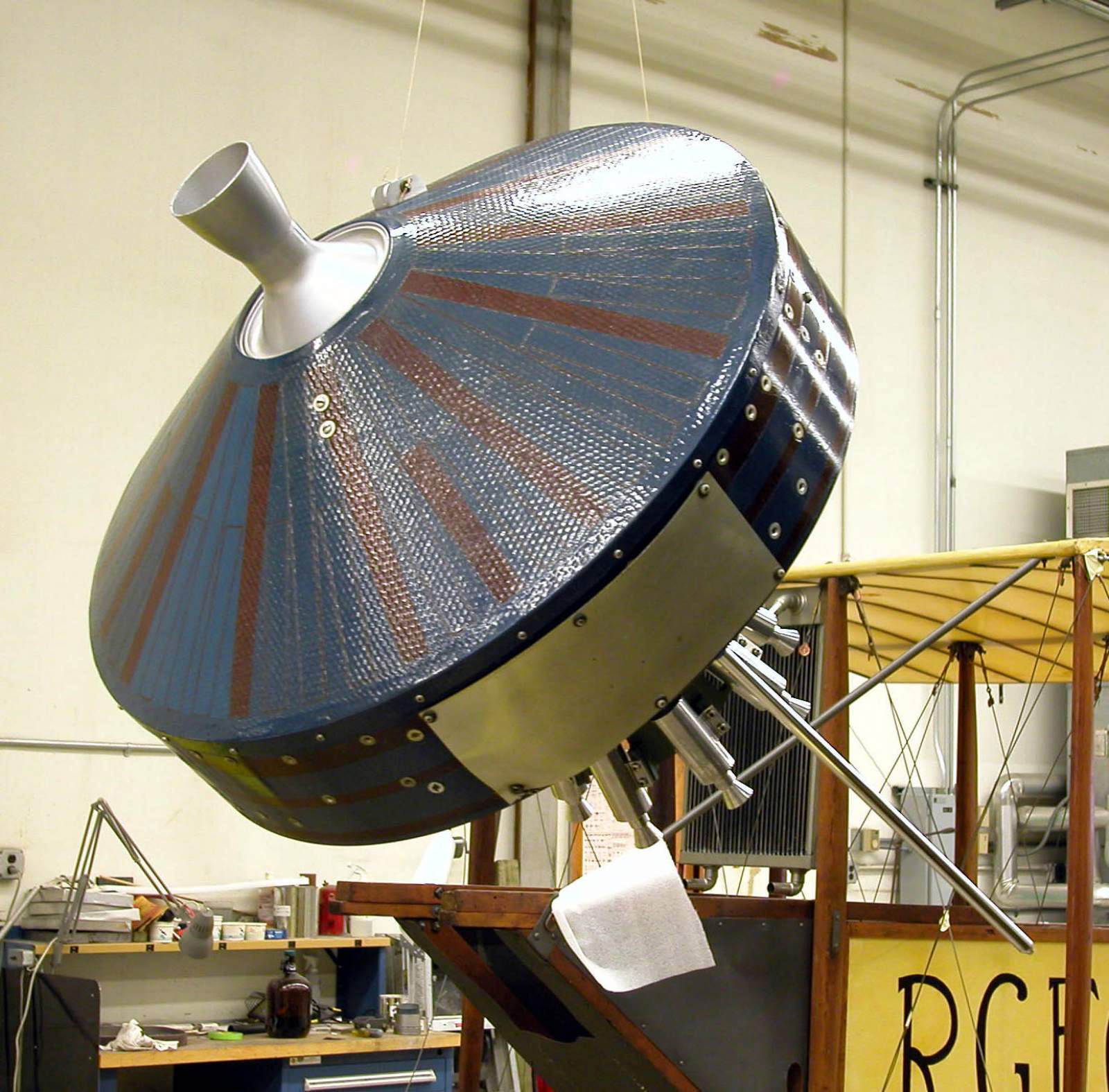
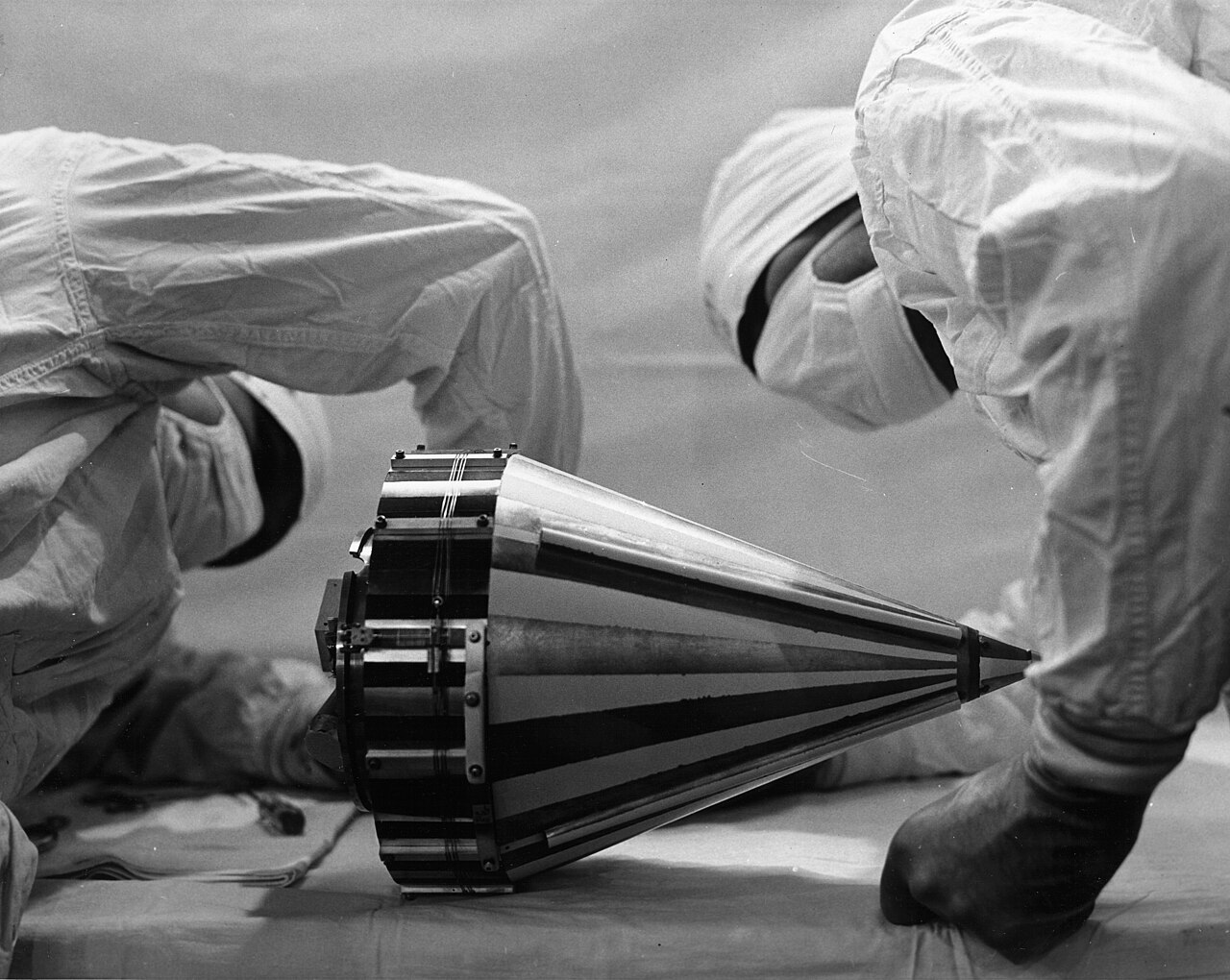
Left: Pioneer 1 shortly before its launch on a Thor-Able rocket. Middle: Replica of Pioneer 1 on display at the Smithsonian Institute’s Steven F. Udvar-Hazy Center in Chantilly, Virginia. Image credit: courtesy National Air and Space Museum. Right: Engineers inspect Pioneer 3 before launch. The nearly identical Pioneer 4 became the first American spacecraft to reach solar orbit.
The new agency inherited satellite programs from other agencies. The first of these, part of a program of lunar orbiters inherited from the U.S. Air Force, launched on Oct. 11, 1958, under the auspices of NASA although the Air Force conducted the operations. Pioneer 1 blasted off aboard a Thor-Able rocket from a fledgling launch facility at Cape Canaveral, Florida. Although it did not achieve its intended mission to orbit the Moon due to a rocket malfunction, Pioneer 1 did reach a then record altitude of about 70,000 miles. The probe returned scientific data confirming the existence of the Van Allen radiation belts until it burned up on reentry in the Earth’s atmosphere 43 hours after launch. Two other Pioneers met similar fates in November and December. Pioneer 4, although it missed the Moon, became the first American spacecraft to enter solar orbit in March 1959. In the subsequent decades, NASA launched spacecraft to unlock the mysteries of the universe, dispatched probes to make close up observations of every planet in the solar system, sent men on voyages to the Moon, built a space station to maintain a permanent human presence in space, and today is preparing to return astronauts to the Moon.





























